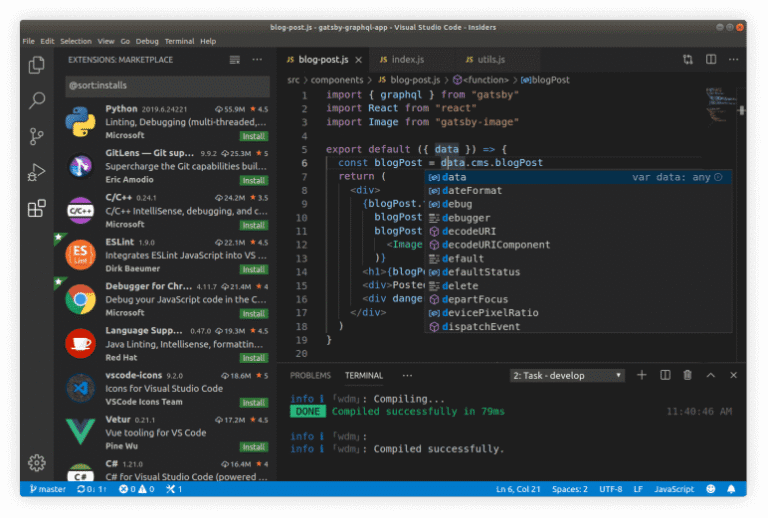Looking to enhance data visualization skills using Python? Matplotlib is the way to go!
In this comprehensive article, we will dive into the world of Matplotlib, exploring its integration with NumPy and Pandas, creating various types of plots, and providing a step-by-step installation guide.
Whether you are a beginner or an experienced Python user, this overview will help you master the art of data visualization with Matplotlib. Let’s get started!
Key Takeaways:
Contents
- 1 Key Takeaways:
- 2 Matplotlib: A Comprehensive Overview
- 2.1 Introduction to Matplotlib and Python
- 2.2 Understanding Matplotlib and Pyplot
- 2.3 Installation Guide for Matplotlib
- 2.4 Exploring Matplotlib UI Menu
- 2.5 Integration of Matplotlib with NumPy
- 2.6 Utilizing Matplotlib with Pandas
- 2.7 Creating Various Types of Plots with Matplotlib
- 2.8 Links to Related Resources
- 3 Frequently Asked Questions
- 3.1 What is Matplotlib and how does it differ from other plotting libraries?
- 3.2 What are the key features of Matplotlib?
- 3.3 Can Matplotlib be used with other Python libraries?
- 3.4 What types of plots can be created with Matplotlib?
- 3.5 Is Matplotlib only suitable for scientific applications?
- 3.6 How can I get started with using Matplotlib?
- Matplotlib is a powerful plotting library that provides an object-oriented API for creating and embedding plots in Python applications.
- It can be easily integrated with NumPy and Pandas, making it a valuable tool for data analysis and visualization.
- With Matplotlib, users can create a wide range of plots, from simple line graphs to complex visualizations, with a user-friendly UI menu and installation process.
Matplotlib: A Comprehensive Overview
Matplotlib is a powerful data visualization library in Python that provides a comprehensive suite of plotting tools for creating intricate and detailed visual representations of data.
Matplotlib plays a vital role in the fields of data analysis and scientific research, allowing developers to effectively convey complex data insights through various types of plots, including line plots, scatter plots, histograms, bar charts, and more. One of its key strengths is its seamless integration with popular Python libraries like NumPy and Pandas, enabling users to easily work with multidimensional arrays and structured data. Matplotlib supports the creation of both 2D and 3D plots, offering developers the flexibility to visualize data in multiple dimensions.
Installing Matplotlib is a straightforward process, typically achieved using Python’s package manager, pip. By running a simple command in the terminal, users can quickly download and set up Matplotlib on their systems, allowing them to start utilizing its powerful visualization capabilities without any hassle.
Introduction to Matplotlib and Python
Introducing Matplotlib and Python involves exploring the seamless integration of Matplotlib’s visualization capabilities within the Python programming environment, leveraging NumPy for efficient data handling and matplotlib.pyplot for interactive plotting functionalities.
Matplotlib, a powerful plotting library, stands out in the Python ecosystem for its versatility and user-friendly interface. By harnessing Matplotlib in Python, developers can create a wide range of visualizations, from simple line plots to intricate 3D plots, providing profound insights into complex datasets. The integration of NumPy further enhances the computational efficiency by allowing seamless manipulation of data arrays and matrices, crucial for numerical computations.
The rich set of features offered by matplotlib.pyplot enables users to customize plots with various styles, colors, and markers, making the visualizations more engaging and informative. With its easy-to-use functions, generating histograms, scatter plots, bar charts, and more becomes effortless, catering to diverse data visualization needs.
Understanding Matplotlib and Pyplot
To comprehend Matplotlib and Pyplot, one must delve into the underlying API structure, the concept of figures and axes, the canvas for rendering visual elements, and the interplay between backend and frontend components in creating a graphical user interface (GUI) enriched with artistic elements.
Matplotlib, a widely-used plotting library in Python, is built on the concept of objects like figures and axes. These elements play a crucial role in plot creation, where figures act as the overall containers for plots, while axes represent individual plots within the figures. The canvas, the graphical space where visual elements are rendered, interacts closely with these figures and axes to display the final output. Understanding the interaction between the backend, responsible for computations and data handling, and the frontend components, dealing with graphical user interface representation, is vital for developing sophisticated, interactive plots with Matplotlib and Pyplot.
Installation Guide for Matplotlib
For a smooth transition into Matplotlib’s visualization realm, a structured installation guide is paramount, ensuring seamless integration with Python environments such as Ubuntu and Anaconda, while highlighting key features to aid users in maximizing their plotting potential.
On Ubuntu, start by updating the package list and installing pip, the Python package manager. Use the command sudo apt-get update to update the system and then install pip with sudo apt-get install python3-pip. Once pip is installed, you can proceed to install Matplotlib using pip by executing pip install matplotlib. For Anaconda users, Matplotlib is typically included by default, but ensuring it’s up to date can be done using the command conda install matplotlib.
Optimizing your Matplotlib experience involves customizing configurations. You can configure Matplotlib’s default parameters by modifying the matplotlibrc file. This file allows you to set preferences such as line styles, font sizes, and figure sizes. Utilizing Matplotlib’s interactive mode can enhance your plotting efficiency. By activating interactive mode, plots appear immediately after they are created, offering real-time feedback to users during the plotting process.
Exploring Matplotlib UI Menu
Exploring the Matplotlib UI Menu unveils a plethora of options and toolkits that facilitate advanced plotting functionalities, including integration with popular libraries like seaborn for enhanced data visualization capabilities.
Within the Matplotlib UI Menu, users can access a wide range of functionalities to customize plots, from adjusting colors, markers, and line styles to configuring grid properties and axes limits. The toolbar offers quick access to common operations like saving and exporting plots, zooming, and panning. Advanced features such as subplots, animations, and interactive widgets provide extensive control over the visualization process. Utilizing specialized toolkits like mpl_toolkits allows for creating complex plots such as 3D visualizations, while integrating external libraries like seaborn enhances the aesthetic appeal and depth of data representation.
Integration of Matplotlib with NumPy
Integrating Matplotlib with NumPy unlocks a realm of possibilities for data visualization, especially in 3D environments with mplot3d capabilities, allowing seamless creation of complex plots and interactive visual representations.
Matplotlib, a powerful plotting library, couples smoothly with NumPy, a fundamental package for scientific computing in Python. The integration of these tools enables the manipulation of numerical data efficiently for visualization purposes.
In terms of three-dimensional plots, mplot3d, an important component of Matplotlib, proves to be exceptionally beneficial. It enables users to generate stunning 3D visualizations with ease, conveying intricate relationships within the data in a visually appealing manner.
The seamless synergy between NumPy’s data handling capabilities and Matplotlib’s plotting functionalities simplifies the process of transforming raw data into meaningful insights. This integration provides a user-friendly environment for professionals and enthusiasts to delve deep into their datasets and bring out valuable patterns through compelling visualizations.
Utilizing Matplotlib with Pandas
Leveraging Matplotlib in conjunction with Pandas offers a robust toolkit for data visualization and analysis, with additional capabilities from seaborn to enhance the aesthetics and insights derived from plotted data.
Matplotlib, regarded as a foundational plotting library, provides a flexible platform for creating various types of plots and visualizing data trends with precision. Meanwhile, Pandas seamlessly integrates with Matplotlib, allowing for easy manipulation and analysis of data through its powerful data structures like DataFrames and Series.
The amalgamation of Matplotlib’s extensive plotting capabilities and Pandas’ versatile data processing features enables users to generate informative visual representations that can uncover intricate patterns, relationships, and outliers within datasets effortlessly.
Seaborn, a high-level visualization tool built on top of Matplotlib, further enhances the aesthetic appeal of data plots by providing customizable themes, color palettes, and advanced statistical visualization functionalities.
Creating Various Types of Plots with Matplotlib
The versatility of Matplotlib shines through in its ability to create an array of plots, including 2D and 3D visualizations such as bar charts, line plots, pie charts, scatter plots, histograms, wireframes, surface plots, and contour plots, offering a rich tapestry of visual representation options.
Bar charts are ideal for comparing categories or showing trends over time, while line plots are excellent for representing continuous data. On the other hand, pie charts are perfect for displaying proportions within a whole, and scatter plots are great for visualizing relationships between variables. Histograms help in understanding the distribution of data, whereas wireframes and surface plots can offer a detailed view of mathematical functions. Contour plots are beneficial for illustrating three-dimensional data in a two-dimensional format.
Links to Related Resources
Explore additional resources related to Matplotlib, including NumFOCUS for community support, Jupyter Notebook for interactive plotting environments, Basemap and Cartopy for geographical visualizations, Excel tools integration, DNA Features Viewer for biological data, plotnine for grammar of graphics implementation, and WCSAxes for astronomical data plotting.
NumFOCUS is an independent nonprofit dedicated to supporting and promoting open-source scientific computing; their forums and resources can provide valuable assistance when working with Matplotlib.
Jupyter Notebook is a popular platform for data analysis, allowing users to create interactive visualizations seamlessly integrated with their code.
Basemap and Cartopy are specialized toolkits ideal for creating maps and geographic visualizations with Matplotlib, enhancing the library’s capabilities beyond generic plotting.
Frequently Asked Questions
What is Matplotlib and how does it differ from other plotting libraries?
Matplotlib is a popular plotting library for the programming language Python. It provides a user-friendly and flexible way to create high-quality visualizations of data. What sets Matplotlib apart from other libraries is its close integration with NumPy, a numerical mathematics extension for Python, which makes it perfect for scientific and statistical applications.
What are the key features of Matplotlib?
Matplotlib offers a wide range of features, including support for a variety of plot types, customization options for colors, styles, and fonts, interactive capabilities for exploring data, and the ability to embed plots in different applications. Its object-oriented API allows for greater control and flexibility in creating visualizations.
Can Matplotlib be used with other Python libraries?
Yes, Matplotlib can be used with other Python libraries, such as Pandas for data manipulation and analysis, and SciPy for scientific computing. In fact, Matplotlib works seamlessly with many other popular libraries, making it a versatile tool for visualizing data in different contexts.
What types of plots can be created with Matplotlib?
Matplotlib offers a wide range of plot types, including line plots, bar charts, histograms, scatter plots, and many more. These can be easily customized and combined to create complex visualizations. Additionally, through its integration with NumPy, Matplotlib allows for the creation of 2D and 3D plots of mathematical functions and arrays.
Is Matplotlib only suitable for scientific applications?
While Matplotlib is commonly used for scientific and statistical visualizations, it can also be used for a variety of other purposes. Its flexibility and customization options make it suitable for creating visualizations in business, finance, and other fields where data plays a crucial role.
How can I get started with using Matplotlib?
To start using Matplotlib, you will need to have Python and NumPy installed on your computer. Matplotlib is included in most Python distributions, but you can also install it separately using the command line. Once installed, you can begin exploring the library’s capabilities by following tutorials and examples available online.





